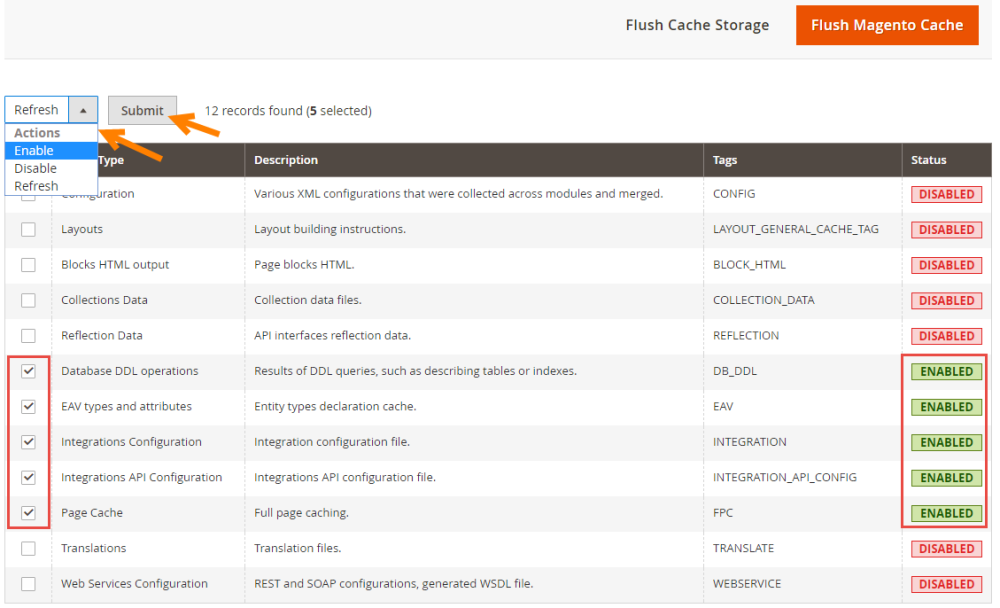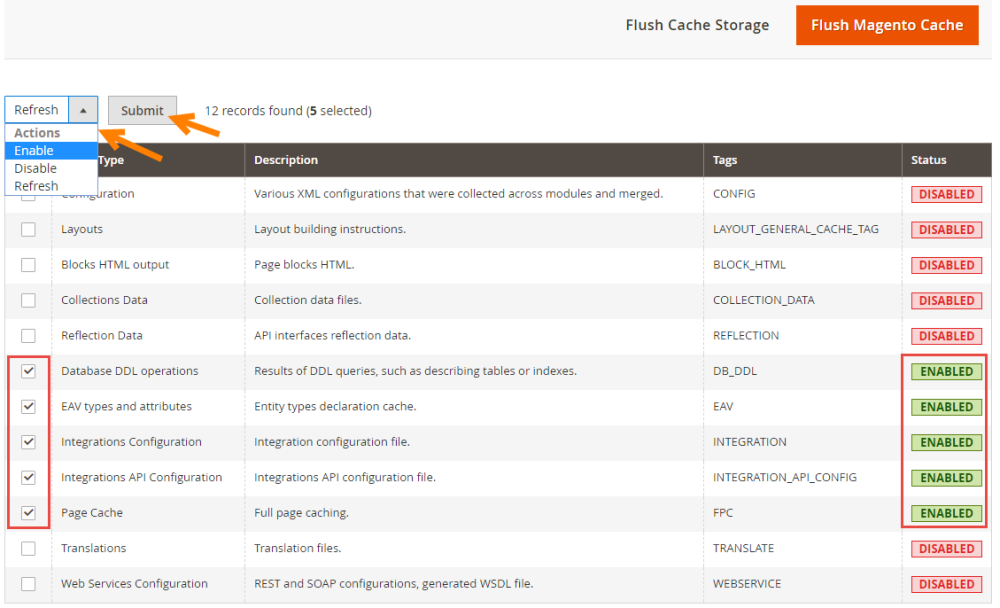Magento 2 Cache Types and Management: A Comprehensive Guide
In this article, we are going to talk about everything there is to know about Magento 2 cache management, including Magento 2 cache types.
What is Cache?
Data is stored in the main memory. If you need to retrieve data, the computer will take time in accessing it from the main memory. However, what if you need frequent access to an app? If the computer needs to retrieve data every single time, it will eventually frustrate the user. This is where cache comes into play. It is a temporary memory that stores data, allowing for faster retrieval.
What is Magento Cache Management?
Web browsers also use cache to speed up website loading times and to retrieve user information. Therefore, when talking about cache in Magento 2, the purpose is improving the performance and speed of your e-commerce website. Magento cache management means managing the various Magento 2 cache types which will be discussed in detail below.
Why Caching Matters in Magento 2?
There are several benefits of cache in Magento 2, including:
Speeds Up Performance
Rather than retrieving the information from the main memory every time a request is forwarded, the system can retrieve it from the temporary storage. In the context of a website, it means that the user will be displayed the webpage quickly. In other words, they don’t have to wait for long.
Positive User Experience
A fast-loading website improves the user experience. Ultimately, this can lead to an increase in your website conversion rate.
Reduces the Server Load
Frequent requests to retrieve the data puts unnecessary strain on the server. Through cache, server requests are minimised, thereby ensuring there is no risk of server overload.
Enhanced Traffic Management
Since cache reduces the load on the server, your Magento 2 store can easily handle more traffic without worrying about performance degradation.
Magento 2 Cache Types
Now, let’s turn our focus towards Magento 2 cache types. Remember, each type serves a very specific performance. Therefore, read this section carefully since it will help you configure cache correctly, thereby boosting your store’s performance.
Magento 2 Full Page Cache (FPC)
As the name indicates, this cache stores the entire HTML page, thereby significantly reducing page loading time and server load. You can configure FPC with in-built options or Varnish.
Configuration Cache
When setting up your Magento website, you will naturally have to configure various settings, including the theme, extensions, and other store-related aspects. This cache type stores all the configuration-relating settings. If you are making changes to your store’s configuration, you need to clear this cache to reflect the latest changes.
Layout Cache
Each website has a different structure and layout. This cache stores information about the page’s structure and layout. It speeds up page rendering by caching XML layout files.
Block HTML Cache
In this case, the block can refer to the navigation menus, product lists, or anything else included in the HTML content block. This cache ensures these blocks are rendered instantly once the cache is stored.
Collections Data Cache
It stores data for product listings, which are essential for category and search results pages. It speeds up the loading of these pages by reducing the need for database queries.
EAV (Entity-Attribute-Value) Types and Attributes
EAV caches improve the performance of product attribute values, making attribute retrieval faster.
How to Enable Cache in Magento 2
Follow the below steps to enable any cache type in Magento 2:
Step 1: Go to the Admin Panel > System > Cache Management
You will get a window like the one below. As you can see, there are numerous Magento 2 cache types. You can read the description to know more about them.

Step 2: Select the cache which you wish to Enable
Step 3: From the drop-Down menu, click ‘Enable’ and then ‘Submit’.
That’s it. You have enabled the selected cache. If you wish to disable, follow the above instructions. Instead of clicking on ‘Enable’, click on ‘Disable’, and then ‘Submit’.
Effective Cache Management in Magento 2
Here are a few tips or best practices for effective cache management in Magento 2:
Cache Refresh
Firstly, it is important to keep in mind that cache files can become corrupted. It can happen due to several reasons, including missing cache entries. This can lead to browser crashes or users being shown outdated information. Therefore, it is imperative for website admins to regularly refresh and clear the cache.
Make it a habit to clear the cache after making changes to the configurations or updating any other aspect of the website. If users are served outdated information, this can undermine their user experience. Remember, a single negative review can undo 100 positive reviews.
Cache Warmer
Use a cache warmer which is basically a tool that pre-populates the cache even before a user requests it. This ensures that users always have access to cached content. This can significantly improve a website’s performance.
With this extension, you can pre-load cache, thereby boosting your website’s performance. You can also schedule automatic crawls and even prioritise store pages. To know more about it, book a live demo.
Third-Party Cache Solutions
While Magento 2 has built-in options, there are other reliable third-party cache tools like Varnish or Radis. They offer much more enhanced features, making them a must-have for stores looking to transform the user experience.
Use Magento 2 Full Page Cache
If your website enjoys good traffic, use Magento 2 full page cache. This will ensure that your website is ready to handle any increase in traffic at any time.
Common Problems with Magento 2 Cache Management
While there is no doubt that your store cannot function without proper cache management, you need to be aware of the challenges associated with cache. These include:
Outdated Content
If the cache is not regularly refreshed or cleared, users will be displayed outdated content.
Complex Magento Cache Management
We have only listed a handful of Magento 2 cache types. There are a lot more, thereby making cache management a challenging task. We recommend using expert Magento developers for configuring Magento 2 cache. Any misconfigurations can cause issues, impacting the website’s performance.
Storage Requirements
If you are implementing Magento 2 full page cache or using a third-party tool like Varnish, you need to have additional dedicated memory for cache. This can increase memory costs, but it is a one-time expense.
Dependency on Cache Warmers
If you are using a cache warmer, it adds another layer of complexity.
How to Clear Magento 2 Cache?
Before we conclude our discussion, let’s quickly go through how you can clear Magento 2 cache.
Step 1: Go to Admin Panel
Step 2: Click on System
Step 3: Cache Management
Step 4: Select Which Cache You Wish to Clear
As an example, we have selected five cache types.

Step 5: Click on the Drop-Down Menu on the Left Side
Step 6: Click on Refresh
Step 7: Click on Submit
Final Thoughts on Magento 2 Cache Management
This concludes our article on Magento 2 cache management. The discussion confirms that cache is critical for optimal website performance. Incorrect configurations can lead to outdated content, browser crashes, and more. By setting up the different Magento 2 cache types exactly as they were intended to, you can ensure that your e-commerce site runs smoothly. This will improve customer satisfaction, leading to higher conversions.
Other Articles to Read:This blog was created with FME's SEO-friendly blog



